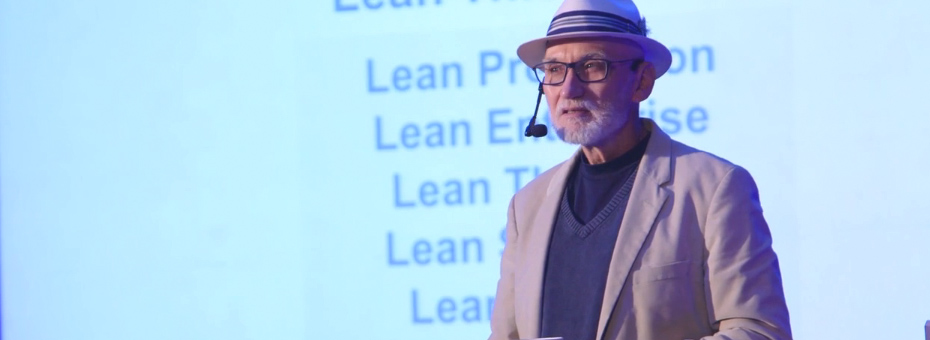Earlier this spring, in an old pretzel factory turned multi-purpose event space in Brooklyn, LEI’s John Shook keynoted the conference LeanUX NYC for the second year in a row with this talk, “Lean is About Building Organizations that Learn to Learn.” Shook spoke about how the lean movement has changed (and not changed) over time, what any lean community (user design or otherwise) can learn from the history of lean thinking in Japan and the United States, and the connection between things “going wrong” and innovation.
Watch a full video of the talk below, read on for excerpts, and let us know your thoughts in the comments.
On the evolution of lean thinking and practice:
“We started out talking about lean production. Then we moved to the lean enterprise (which is not just production)… We call it lean thinking because it’s a matter of if we start to think this way, we can do this in every endeavor; we believe that this is applicable to any endeavor we’ve found. ‘Lean Solutions’ because we’re looking for solutions for customers. Lean Startup… Lean Kanban (Jim Benson is here and others who know this very well). Lean Design… and of course, LeanUX… And what we’re calling Lean now basically had its roots going back to about 1950. There was about a 35 year incubation period, [and that was in Japan].”
On his personal roots with the Toyota Production System:
“I decided I wanted to work with the biggest, most Japanese company I could find because that seemed to be what this was all about. There was something cultural going on; this wasn’t just a matter of being more efficient… I had presumed this was a Japanese thing, and I found out that wasn’t the case at all. If you go look at Japanese companies, they’re no more lean than companies here are. It was a matter of one company that was putting together some ideas that didn’t just originate only with them. It’s a challenge that humanity has had about organizing ourselves more effectively – how we can work together on behalf of producing that has value.”
On how Lean was almost called “Fragile”:
“Researchers sat around in a room and debated, ‘What should we call this?’ One person said we should call it fragile [because] if things don’t work together, things are going to break… Everyone in the room looked around and said, ‘No, let’s not call it fragile because it’s a very robust, natural system, so that doesn’t capture it.’ And they came up with the word Lean. If I had been there, I might have argued to somehow include the word ‘learn’ because a lot of people interpret it to mean downsizing, just getting smaller, cutting costs [which it’s not]. It’s about how we can create better value… and it also means that we have to learn how to do that.”
On the inevitability of things going wrong and how to not to set people up to fail:
“It’s wonderful to think about the customer… to think about the business and how we can grow it, but someone is going to actually have to do the work. And when things go wrong, it often presents a moral dilemma for the person doing the work… [At Toyota on the assembly line], instead of trying to create a situation where it was hard for me to know what to do, how to find things gone wrong was built into the work… It was no longer a negative.”
On how to validate one’s own learning or a team’s learning:
“We have to truly validate learning, not just say, ‘This worked better than that, so therefore let’s just do this!’ We have to know why the failure occurred, otherwise we’ll commit the same failure later.”
On how to create value on the front lines, whatever the work is:
“Do one thing at one time, move one item. Solve one problem. Coach one person, on one matter.”
On the applicability of lean thinking and practice to any field:
“It’s really the Toyota Production System that we now call Lean. And we’ve learned to expand beyond just Toyota… I will say that this is the most powerful organizational management system that we have seen… 100 years ago, Henry Ford was saying, ‘I want you to produce; don’t worry about the factory’… What lean thinking does is turn that on its head – it says, ‘No, the job of the worker is to build in perfect quality every time and to do that by finding things gone wrong.'”
On showing respect for people by engaging them fully in improving the work to be done:
“If we try to make the engagement of people who work for us a matter of a mere transaction of time and money, then we can’t ask for people’s hearts and minds. And what a lean organization is all about is having everyone fully engaged with their human creativity in making improvements and solving problems.”





